| View previous topic :: View next topic |
| Author |
Message |
wolan


Joined: 30 Jun 2015
Posts: 576
Location: Zurich
|
 Posted: Sat May 27, 2017 11:01 pm Post subject: Posted: Sat May 27, 2017 11:01 pm Post subject: |
 |
|
wolan wrote:
I use the rare Porst Color MCM 55mm f1.7
Cheers.
_________________
https://www.flickr.com/photos/149089857@N03/ |
|
| Back to top |
|
 |
Big Dawg


Joined: 28 Jan 2009
Posts: 2530
Location: Thach Alabama
|
 Posted: Sat May 27, 2017 11:02 pm Post subject: Posted: Sat May 27, 2017 11:02 pm Post subject: |
 |
|
Big Dawg wrote:
I recently purchased a Sigma 105 macro. It is an auto focus but I use it in manual most of the time and it does well on my Pentax K1 camera.




_________________
Big Dawg |
|
| Back to top |
|
 |
pdccameras


Joined: 23 Aug 2009
Posts: 826
Location: Putnam, CT
Expire: 2014-08-11
|
 Posted: Sun May 28, 2017 12:02 am Post subject: Posted: Sun May 28, 2017 12:02 am Post subject: |
 |
|
pdccameras wrote:
Now that's more like it!
Great shots, Big Dawg.
Like many of you have said, I have a soft spot for macros as well - perhaps because they let me take photos of subjects that don't move around too much most of the time in a controlled situation. 
My percentage of handheld/light tripod keepers seems to be pretty high with the 100mm F/4 SMC takumar
However, Klaus, in answer to your question: "Hmm, so no-one uses the (famous) ZEISS S-Planar 60mm or 100mm?
Or the even more famous CV Apo Lanthar 2.5/125mm ???"
I do have a copy of the CV Apo Lanthar 2.5/125mm, but sometimes I'm afraid to take out and play - and it really deserves a good tripod! Here are some shots I took with it today on the Canon 5D RS. It's a spectacular lens - I'd hate to get it dirty.
#1

#2

#3

#4
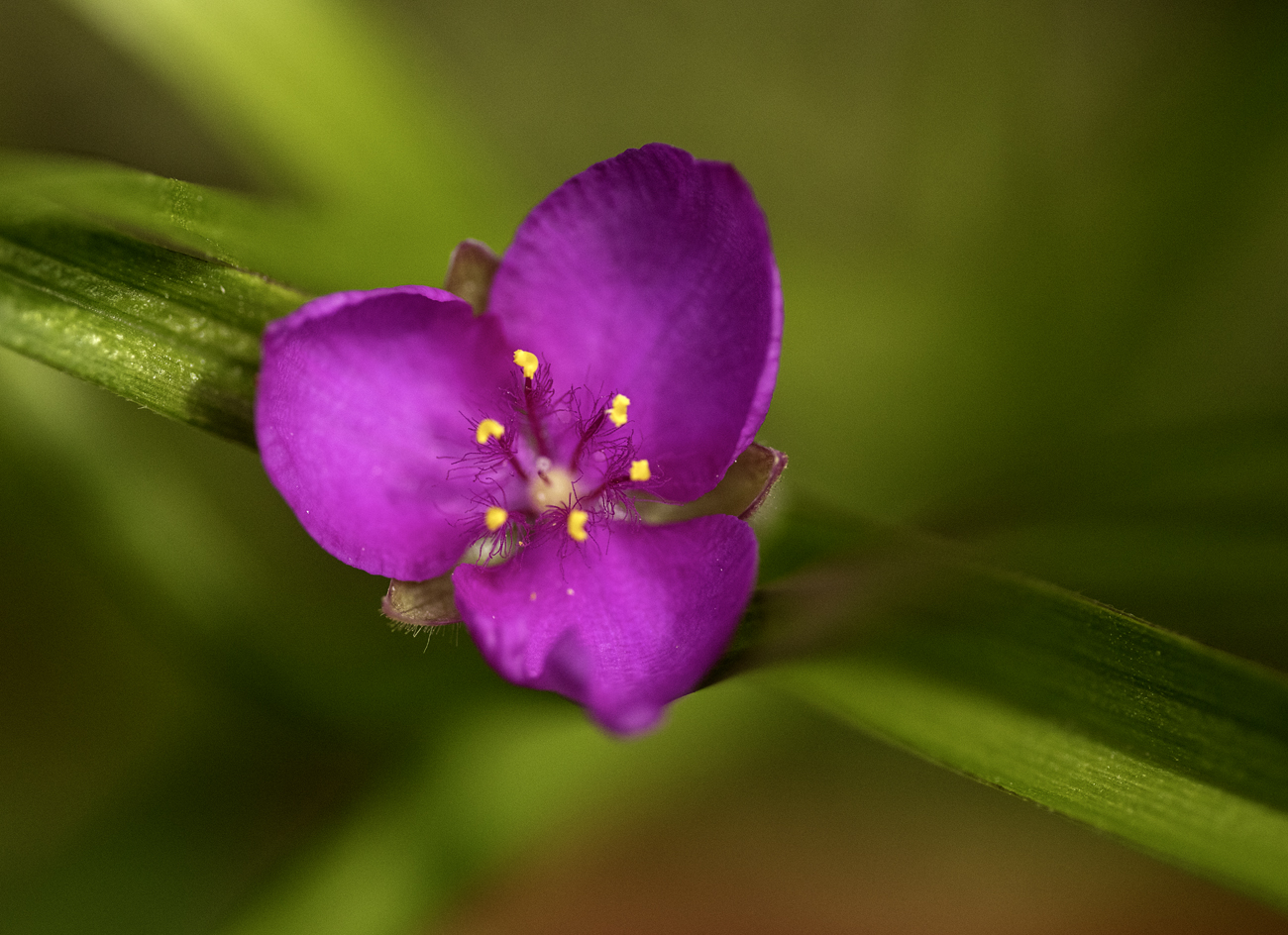
#5

#6
  
_________________
Canon 5D Mii, Canon 40D, Canon 350D IR, Sony A7 Mii, Sony Alpha-6000, a ton of lenses: AF & MF and too many cameras to count, all formats: 110 - 4x5. |
|
| Back to top |
|
 |
visualopsins


Joined: 05 Mar 2009
Posts: 10543
Location: California
Expire: 2025-04-11
|
 Posted: Sun May 28, 2017 1:08 am Post subject: Posted: Sun May 28, 2017 1:08 am Post subject: |
 |
|
visualopsins wrote:
APO Lanthars & Zeiss S-Planars cost multiple times the others, these days.
Canon MP-E anybody?
_________________
☮☮☮☮☮☮☮☮☮☮☮☮☮☮☮☮☮☮☮☮☮☮☮☮☮☮☮☮☮☮☮☮ like attracts like! ☮☮☮☮☮☮☮☮☮☮☮☮☮☮☮☮☮☮☮☮☮☮☮☮☮☮☮☮☮☮☮☮
Cameras: Sony ILCE-7RM2, Spotmatics II, F, and ESII, Nikon P4
Lenses:
M42 Asahi Optical Co., Takumar 1:4 f=35mm, 1:2 f=58mm (Sonnar), 1:2.4 f=58mm (Heliar), 1:2.2 f=55mm (Gaussian), 1:2.8 f=105mm (Model I), 1:2.8/105 (Model II), 1:5.6/200, Tele-Takumar 1:5.6/200, 1:6.3/300, Macro-Takumar 1:4/50, Auto-Takumar 1:2.3 f=35, 1:1.8 f=55mm, 1:2.2 f=55mm, Super-TAKUMAR 1:3.5/28 (fat), 1:2/35 (Fat), 1:1.4/50 (8-element), Super-Multi-Coated Fisheye-TAKUMAR 1:4/17, Super-Multi-Coated TAKUMAR 1:4.5/20, 1:3.5/24, 1:3.5/28, 1:2/35, 1:3.5/35, 1:1.8/85, 1:1.9/85 1:2.8/105, 1:3.5/135, 1:2.5/135 (II), 1:4/150, 1:4/200, 1:4/300, 1:4.5/500, Super-Multi-Coated Macro-TAKUMAR 1:4/50, 1:4/100, Super-Multi-Coated Bellows-TAKUMAR 1:4/100, SMC TAKUMAR 1:1.4/50, 1:1.8/55
M42 Carl Zeiss Jena Flektogon 2.4/35
Contax Carl Zeiss Vario-Sonnar T* 28-70mm F3.5-4.5
Pentax K-mount SMC PENTAX ZOOM 1:3.5 35~105mm, SMC PENTAX ZOOM 1:4 45~125mm
Nikon Micro-NIKKOR-P-C Auto 1:3.5 f=55mm, NIKKOR-P Auto 105mm f/2.5 Pre-AI (Sonnar), Micro-NIKKOR 105mm 1:4 AI, NIKKOR AI-S 35-135mm f/3,5-4,5
Tamron SP 17mm f/3.5 (51B), Tamron SP 17mm f/3.5 (51BB), SP 500mm f/8 (55BB), SP 70-210mm f/3.5 (19AH)
Vivitar 100mm 1:2.8 MC 1:1 Macro Telephoto (Kiron)
|
|
| Back to top |
|
 |
Ray Parkhurst


Joined: 04 Jul 2011
Posts: 497
Location: Santa Clara, CA, USA
|
 Posted: Sun May 28, 2017 1:27 am Post subject: Posted: Sun May 28, 2017 1:27 am Post subject: |
 |
|
Ray Parkhurst wrote:
| visualopsins wrote: |
APO Lanthars & Zeiss S-Planars cost multiple times the others, these days.
Canon MP-E anybody? |
The MPE is not really a "macro" lens. I made the assumption in this thread that we were talking about lenses that can go from infinity to 1:2, 1:1, or higher.
_________________
...See my Numismatic Photography website at: http://www.macrocoins.com
...Primary Studio Cameras: Sony A7Rm4 and Canon HRT2i
...Go-To studio lenses: Nikon 95mm and 105mm Printing-Nikkors; Schneider 85mm Macro-Varon; Nikon 5x, 10x, and 20x Measuring Microscope Objectives; Mitutoyo BD Plan Apo 50x Microscope Objective
...My Go-To Walkaround Lenses: Laowa 60mm Super Macro; Nikon 28-105D (in manual mode for macro); |
|
| Back to top |
|
 |
Mir


Joined: 07 Feb 2011
Posts: 978
Location: Montreal, Canada
Expire: 2017-09-30
|
 Posted: Sun May 28, 2017 3:18 am Post subject: Posted: Sun May 28, 2017 3:18 am Post subject: |
 |
|
Mir wrote:
| kds315* wrote: |
Hmm, so no-one uses the (famous) ZEISS S-Planar 60mm or 100mm?
Or the even more famous CV Apo Lanthar 2.5/125mm ??? |
I wish !! ... 
_________________
"Obsta principiis, finem respice"
"There is a fine line between hobby and mental illness"
MISC: Tamron SP 35-80 (01A), Auto Chinon Tomioka 1.4/55, Tokina AT-X 2.5/90, Tamron SP 5,6/300 (54B)
ZEISS: WG Distagon 2.8/25, WG Distagon 2.8/35 HFT, WG Planar HFT 1.4/50, Ultron 1.8/50, WG Sonnar 2.8/85, WG Sonnar HFT 2.8/135
VOIGTLÄNDER : Ultron Aspherical 1.8/21, Ultron 2/28, Nokton Aspherical 1.2/35, Nokton Classic 1.4/40, Nokton Aspherical 1.5/50, Color-Heliar 2.5/75
MINOLTA: MD 3.5/35-70 Macro, MD 1.2/50, MC Rokkor-X 1.2/58, MD Macro 3.5/50
LEITZ: SUMMICRON-R 2/35 (II), SUMMICRON-R 2/50 (II), TELE ELMARIT-M 2,8/90 (Thin)
CANON RF: 2.8/28, 2/35, 1.2/50, 1.4/50, Serenar 1.8/50, 2/85, 2/100, 3.5/100
LTM : CHIYODA KOGAKU SUPER ROKKOR 1.8/5cm, CHIYOKO SUPER ROKKOR C 2/5cm, TOKYO KOGAKU Topcor-S 2/5cm, Nippon Kogaku NIKKOR-H.C 2/5cm, FUJI FILM CO. FUJINON L 2/5cm, KMZ Jupiter-8 2/5cm
And a small Minolta AF set: 2.8/20, 1.4/35, 1.4/50, 2/100, 4.5/100-200
@we3fotography
@7plus_pictures
@_whats.that.car_ |
|
| Back to top |
|
 |
piggsy


Joined: 04 May 2015
Posts: 84
Location: Brisbane, Australia
|
 Posted: Sun May 28, 2017 4:46 am Post subject: Posted: Sun May 28, 2017 4:46 am Post subject: |
 |
|
piggsy wrote:
Yeah, the 125 APO Lanth is my dream lens, and there it will probably remain - I can't ever see myself spending what they go for now!
While I really like the Bokina, lately I've been using the Tamron 180mm F3.5 macro as my main walkabout macro lens - adapted as a manual lens from nikon mount, since that has manual aperture. The flexibility of it is insane, and other than some very minor fringing at 3.5 on very harsh white edges it has essentially no flaws I've ever seen. Although, that said, my use of it really hangs from a few things - the Olympus IBIS, which makes a 360mm birding/235mm macro lens usable, neat image to denoise flashless shots (none of these are with a flash), and focus stacking to make it usable for macro purposes at 3.5/5.6. But just being able to go from this -
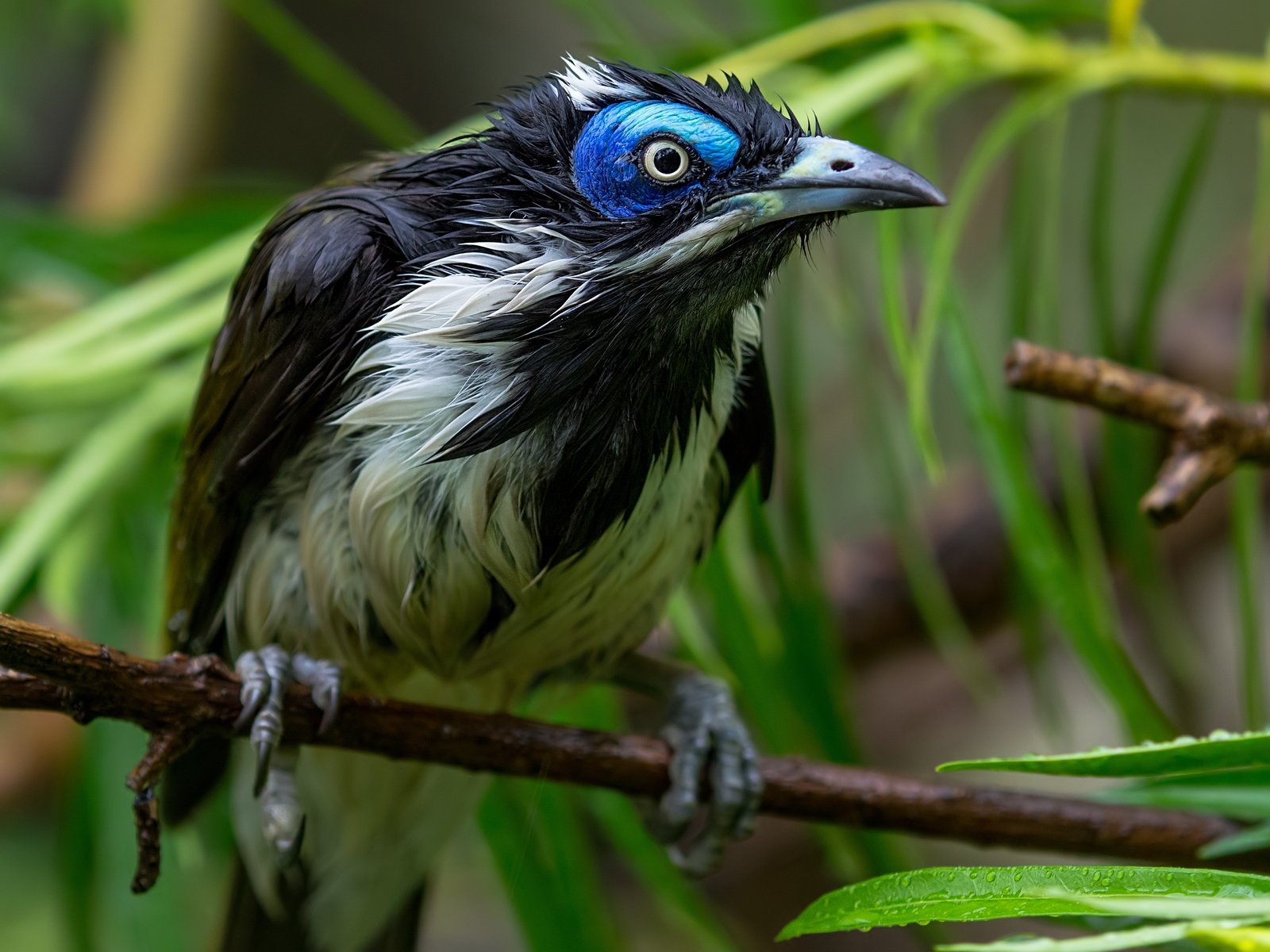
or this

to this
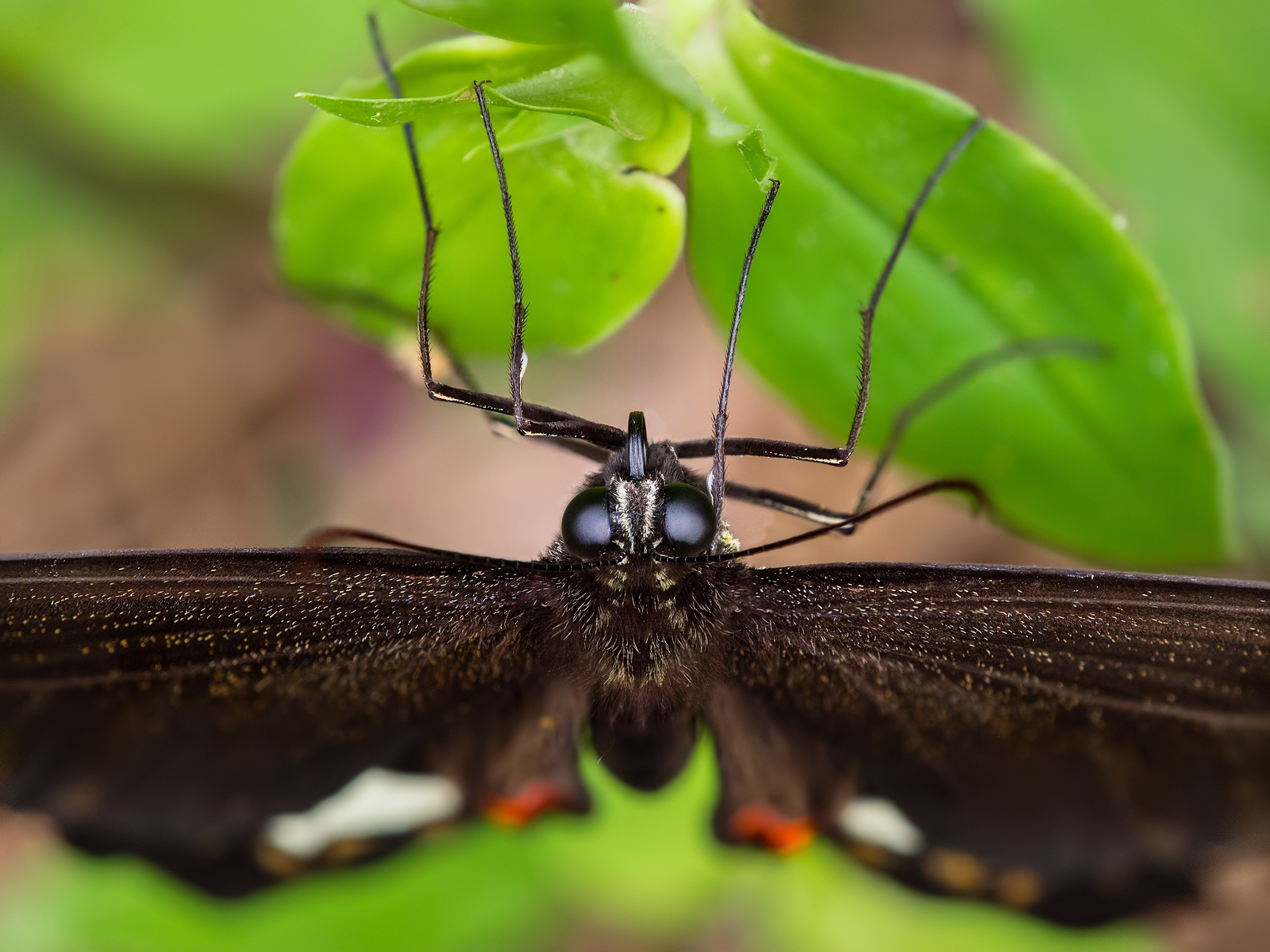
or this
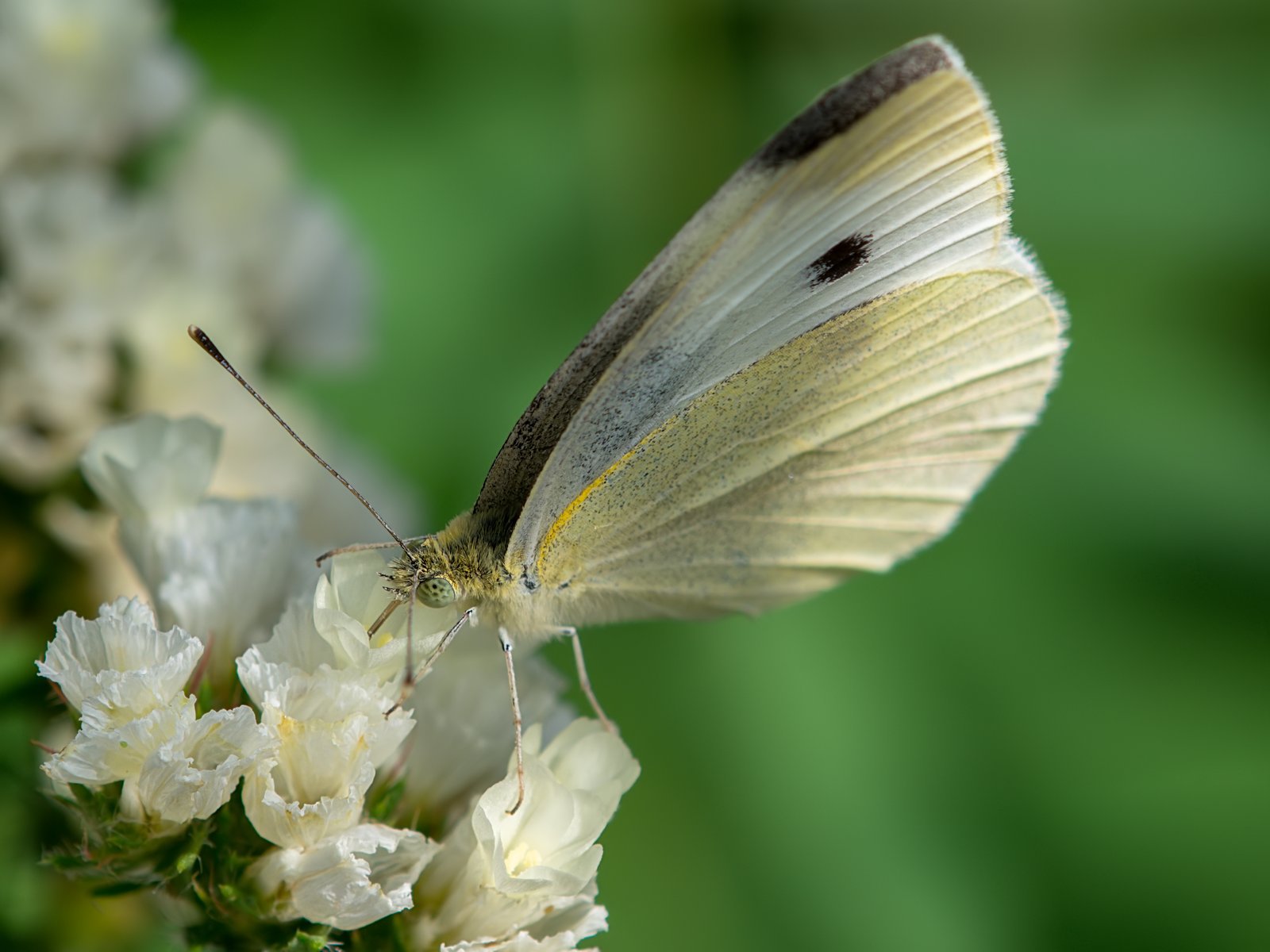
without swapping a lens or using a diopter or anything - that is pretty neat.
Just to delve deeper - here's what ISO1600, wide open at 3.5, looks like with some post -

and by messing with focus stacking you can create shots with moving subjects that would be a stretch even at very steep f-stops, but you're shooting at 1/200 / ISO500 -
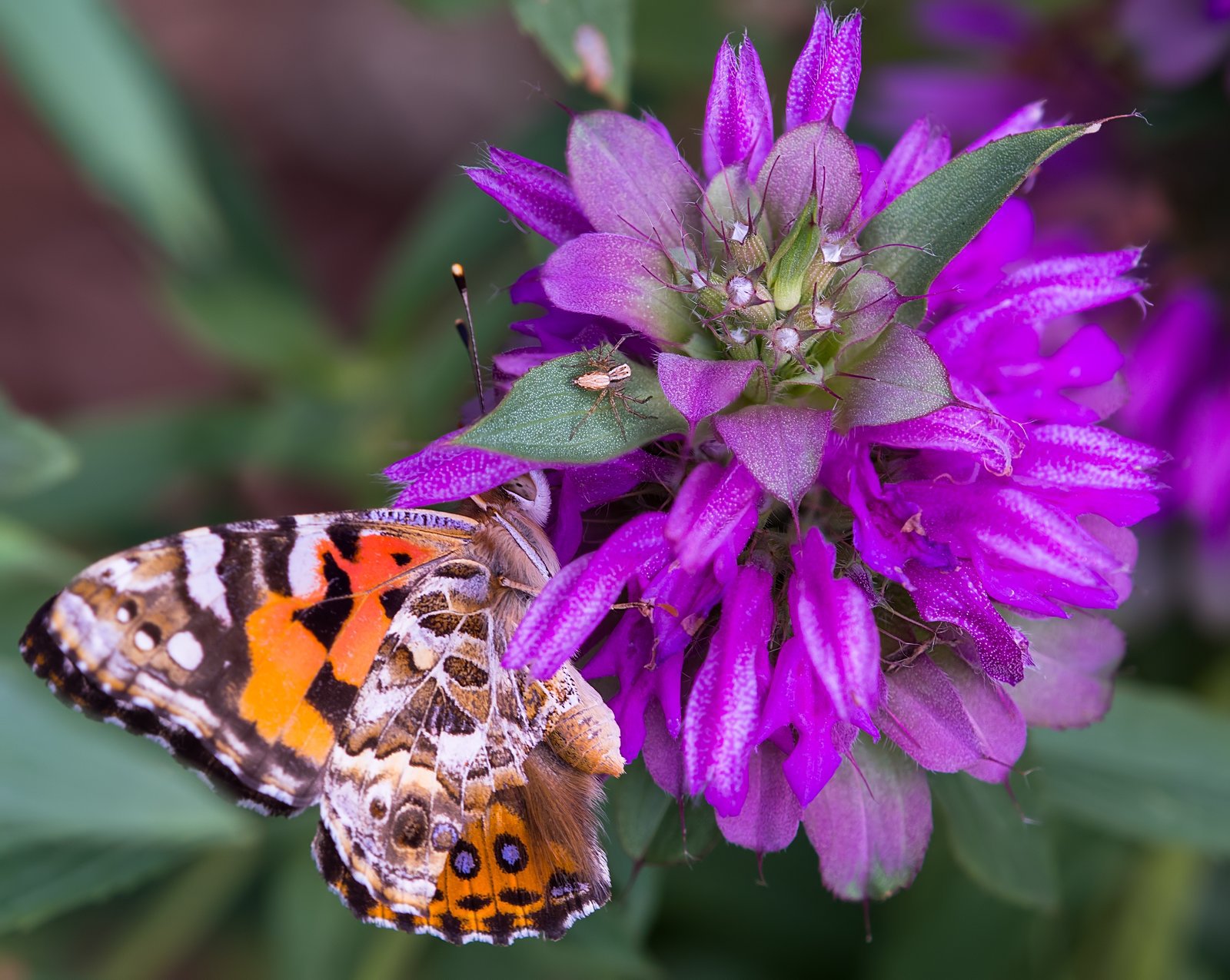
Still like my other lenses (I've been taking the Vivitar S1 90/2.5 out a bunch in the hopes of building some stuff to show that off also) and my Olympus 60 is great for cross polarised flash stuff, but when you don't know if there are going to be birds or bugs or whatever to shoot, the Tamron 180 is pretty much the thing to take.
Also to add, out of focus behaviour on it, given it's 3.5 on m43, is at times quite nice indeed -


_________________
https://www.flickr.com/photos/piggsyface/
You can't fax glitter.
Last edited by piggsy on Sun May 28, 2017 6:48 am; edited 3 times in total |
|
| Back to top |
|
 |
pdccameras


Joined: 23 Aug 2009
Posts: 826
Location: Putnam, CT
Expire: 2014-08-11
|
 Posted: Sun May 28, 2017 5:58 am Post subject: Posted: Sun May 28, 2017 5:58 am Post subject: |
 |
|
pdccameras wrote:
[quote="piggsy"]Yeah, the 125 APO Lanth is my dream lens, and there it will probably remain - I can't ever see myself spending what they go for now!
.... lately I've been using the Tamron 180mm F3.5 macro as my main walkabout macro lens
With beautiful results like these, why would you want anything else? Incredible shots!
Paul
_________________
Canon 5D Mii, Canon 40D, Canon 350D IR, Sony A7 Mii, Sony Alpha-6000, a ton of lenses: AF & MF and too many cameras to count, all formats: 110 - 4x5. |
|
| Back to top |
|
 |
kds315*


Joined: 12 Mar 2008
Posts: 16544
Location: Weinheim, Germany
Expire: 2021-03-09
|
 Posted: Sun May 28, 2017 6:16 am Post subject: Posted: Sun May 28, 2017 6:16 am Post subject: |
 |
|
kds315* wrote:
  
pretty amazing shots you got with your Tamron 180mm macro!!!
_________________
Klaus - Admin
"S'il vient a point, me souviendra" [Thomas Bohier (1460-1523)]
http://www.macrolenses.de for macro and special lens info
http://www.pbase.com/kds315/uv_photos for UV Images and lens/filter info
https://www.flickr.com/photos/kds315/albums my albums using various lenses
http://photographyoftheinvisibleworld.blogspot.com/ my UV BLOG
http://www.travelmeetsfood.com/blog Food + Travel BLOG
https://galeriafotografia.com Architecture + Drone photography
Currently most FAV lens(es):
X80QF f3.2/80mm
Hypergon f11/26mm
ELCAN UV f5.6/52mm
Zeiss UV-Planar f4/60mm
Zeiss UV-Planar f2/62mm
Lomo Уфар-12 f2.5/41mm
Lomo Зуфар-2 f4.0/350mm
Lomo ZIKAR-1A f1.2/100mm
Nikon UV Nikkor f4.5/105mm
Zeiss UV-Sonnar f4.3/105mm
CERCO UV-VIS-NIR f1.8/45mm
CERCO UV-VIS-NIR f4.1/94mm
CERCO UV-VIS-NIR f2.8/100mm
Steinheil Quarzobjektiv f1.8/50mm
Pentax Quartz Takumar f3.5/85mm
Carl Zeiss Jena UV-Objektiv f4/60mm
NYE OPTICAL Lyman-Alpha II f1.1/90mm
NYE OPTICAL Lyman-Alpha I f2.8/200mm
COASTAL OPTICS f4/60mm UV-VIS-IR Apo
COASTAL OPTICS f4.5/105mm UV-Micro-Apo
Pentax Ultra-Achromatic Takumar f4.5/85mm
Pentax Ultra-Achromatic Takumar f5.6/300mm
Rodenstock UV-Rodagon f5.6/60mm + 105mm + 150mm
|
|
| Back to top |
|
 |
Spokklocka

Joined: 14 Jan 2015
Posts: 50
|
 Posted: Sun May 28, 2017 6:36 am Post subject: Posted: Sun May 28, 2017 6:36 am Post subject: |
 |
|
Spokklocka wrote:
Some nice photos in this thread : )
It's interesting to hear about people's experience. I typically do macro without a tripod or rails, though sometimes with a muted flash and have in the past availed of a Minolta AF 100 2,8 which I like optically and worked great on an A-mount camera with IS.
Nowadays there's no A-mount camera anymore, just E, and using it via an LA-EA hasn't been a great user experience, so am selling my 50 and 100mm A-mount AF macros and am pondering on what to replace them with.
50ish is easier (cheaper) and will probably be a Nikkor 55 2,8 while ~100..curiously the FE 100 macro is close to the cost of a used A7ii (have an A7 at the moment)..stabilized lens for unstabilized body or stabilized body for any unstabilized mf lens, hmm. |
|
| Back to top |
|
 |
visualopsins


Joined: 05 Mar 2009
Posts: 10543
Location: California
Expire: 2025-04-11
|
 Posted: Sun May 28, 2017 8:46 am Post subject: Posted: Sun May 28, 2017 8:46 am Post subject: |
 |
|
visualopsins wrote:
| Ray Parkhurst wrote: |
| visualopsins wrote: |
APO Lanthars & Zeiss S-Planars cost multiple times the others, these days.
Canon MP-E anybody? |
The MPE is not really a "macro" lens. I made the assumption in this thread that we were talking about lenses that can go from infinity to 1:2, 1:1, or higher. |
? (Please explain - Canon advertises MP-E as a macro lens)
_________________
☮☮☮☮☮☮☮☮☮☮☮☮☮☮☮☮☮☮☮☮☮☮☮☮☮☮☮☮☮☮☮☮ like attracts like! ☮☮☮☮☮☮☮☮☮☮☮☮☮☮☮☮☮☮☮☮☮☮☮☮☮☮☮☮☮☮☮☮
Cameras: Sony ILCE-7RM2, Spotmatics II, F, and ESII, Nikon P4
Lenses:
M42 Asahi Optical Co., Takumar 1:4 f=35mm, 1:2 f=58mm (Sonnar), 1:2.4 f=58mm (Heliar), 1:2.2 f=55mm (Gaussian), 1:2.8 f=105mm (Model I), 1:2.8/105 (Model II), 1:5.6/200, Tele-Takumar 1:5.6/200, 1:6.3/300, Macro-Takumar 1:4/50, Auto-Takumar 1:2.3 f=35, 1:1.8 f=55mm, 1:2.2 f=55mm, Super-TAKUMAR 1:3.5/28 (fat), 1:2/35 (Fat), 1:1.4/50 (8-element), Super-Multi-Coated Fisheye-TAKUMAR 1:4/17, Super-Multi-Coated TAKUMAR 1:4.5/20, 1:3.5/24, 1:3.5/28, 1:2/35, 1:3.5/35, 1:1.8/85, 1:1.9/85 1:2.8/105, 1:3.5/135, 1:2.5/135 (II), 1:4/150, 1:4/200, 1:4/300, 1:4.5/500, Super-Multi-Coated Macro-TAKUMAR 1:4/50, 1:4/100, Super-Multi-Coated Bellows-TAKUMAR 1:4/100, SMC TAKUMAR 1:1.4/50, 1:1.8/55
M42 Carl Zeiss Jena Flektogon 2.4/35
Contax Carl Zeiss Vario-Sonnar T* 28-70mm F3.5-4.5
Pentax K-mount SMC PENTAX ZOOM 1:3.5 35~105mm, SMC PENTAX ZOOM 1:4 45~125mm
Nikon Micro-NIKKOR-P-C Auto 1:3.5 f=55mm, NIKKOR-P Auto 105mm f/2.5 Pre-AI (Sonnar), Micro-NIKKOR 105mm 1:4 AI, NIKKOR AI-S 35-135mm f/3,5-4,5
Tamron SP 17mm f/3.5 (51B), Tamron SP 17mm f/3.5 (51BB), SP 500mm f/8 (55BB), SP 70-210mm f/3.5 (19AH)
Vivitar 100mm 1:2.8 MC 1:1 Macro Telephoto (Kiron)
|
|
| Back to top |
|
 |
noddywithoutbigears


Joined: 13 Jan 2010
Posts: 215
Location: Leek, Staffordshire
|
 Posted: Sun May 28, 2017 11:59 am Post subject: Posted: Sun May 28, 2017 11:59 am Post subject: |
 |
|
noddywithoutbigears wrote:
Panagor 55mm f2.8 for me, use it as my walk around lens when I may want some macro shots. Great performance and not too heavy or cumbersome on my Fuji X-T10, it's the same lens as the Vivitar 55mm macro.
_________________
Sony A7
Super Takumar 55mm F18, Helios 44-2 58mm f2, Super Takumar 85mm f1.9, Pentacon 50mm f1.8, Zenitar 16mm f2.8 Fisheye, Carl Zeiss Vario Prakticar 35-70mm f2.7-3.5. Carl Zeiss Prakticar 35mm f2.4 |
|
| Back to top |
|
 |
Ray Parkhurst


Joined: 04 Jul 2011
Posts: 497
Location: Santa Clara, CA, USA
|
 Posted: Sun May 28, 2017 4:52 pm Post subject: Posted: Sun May 28, 2017 4:52 pm Post subject: |
 |
|
Ray Parkhurst wrote:
| visualopsins wrote: |
| ? (Please explain - Canon advertises MP-E as a macro lens) |
The MPE is a unique lens in that it can ONLY take photos in the "macro" range. In fact, it starts where most other lenses end, at 1:1. Other lenses folks are giving testimonial to in this thread are capable of focusing to infinity. It is this type of lens that I believe the OP was referring to when asking about favorite walkaround macro lenses. To support this he showed both infinity and closeup images. The MPE can't focus to infinity. So it is true that the MPE is capable of focusing in the macro range, but it is not a macro lens in the same context as others being mentioned.
_________________
...See my Numismatic Photography website at: http://www.macrocoins.com
...Primary Studio Cameras: Sony A7Rm4 and Canon HRT2i
...Go-To studio lenses: Nikon 95mm and 105mm Printing-Nikkors; Schneider 85mm Macro-Varon; Nikon 5x, 10x, and 20x Measuring Microscope Objectives; Mitutoyo BD Plan Apo 50x Microscope Objective
...My Go-To Walkaround Lenses: Laowa 60mm Super Macro; Nikon 28-105D (in manual mode for macro); |
|
| Back to top |
|
 |
visualopsins


Joined: 05 Mar 2009
Posts: 10543
Location: California
Expire: 2025-04-11
|
 Posted: Sun May 28, 2017 6:52 pm Post subject: Posted: Sun May 28, 2017 6:52 pm Post subject: |
 |
|
visualopsins wrote:
| Ray Parkhurst wrote: |
| visualopsins wrote: |
| ? (Please explain - Canon advertises MP-E as a macro lens) |
The MPE is a unique lens in that it can ONLY take photos in the "macro" range. In fact, it starts where most other lenses end, at 1:1. Other lenses folks are giving testimonial to in this thread are capable of focusing to infinity. It is this type of lens that I believe the OP was referring to when asking about favorite walkaround macro lenses. To support this he showed both infinity and closeup images. The MPE can't focus to infinity. So it is true that the MPE is capable of focusing in the macro range, but it is not a macro lens in the same context as others being mentioned. |
Okay, I see, thanks. I guess the MP-E is a lot more like walking around with extention tubes on. 
_________________
☮☮☮☮☮☮☮☮☮☮☮☮☮☮☮☮☮☮☮☮☮☮☮☮☮☮☮☮☮☮☮☮ like attracts like! ☮☮☮☮☮☮☮☮☮☮☮☮☮☮☮☮☮☮☮☮☮☮☮☮☮☮☮☮☮☮☮☮
Cameras: Sony ILCE-7RM2, Spotmatics II, F, and ESII, Nikon P4
Lenses:
M42 Asahi Optical Co., Takumar 1:4 f=35mm, 1:2 f=58mm (Sonnar), 1:2.4 f=58mm (Heliar), 1:2.2 f=55mm (Gaussian), 1:2.8 f=105mm (Model I), 1:2.8/105 (Model II), 1:5.6/200, Tele-Takumar 1:5.6/200, 1:6.3/300, Macro-Takumar 1:4/50, Auto-Takumar 1:2.3 f=35, 1:1.8 f=55mm, 1:2.2 f=55mm, Super-TAKUMAR 1:3.5/28 (fat), 1:2/35 (Fat), 1:1.4/50 (8-element), Super-Multi-Coated Fisheye-TAKUMAR 1:4/17, Super-Multi-Coated TAKUMAR 1:4.5/20, 1:3.5/24, 1:3.5/28, 1:2/35, 1:3.5/35, 1:1.8/85, 1:1.9/85 1:2.8/105, 1:3.5/135, 1:2.5/135 (II), 1:4/150, 1:4/200, 1:4/300, 1:4.5/500, Super-Multi-Coated Macro-TAKUMAR 1:4/50, 1:4/100, Super-Multi-Coated Bellows-TAKUMAR 1:4/100, SMC TAKUMAR 1:1.4/50, 1:1.8/55
M42 Carl Zeiss Jena Flektogon 2.4/35
Contax Carl Zeiss Vario-Sonnar T* 28-70mm F3.5-4.5
Pentax K-mount SMC PENTAX ZOOM 1:3.5 35~105mm, SMC PENTAX ZOOM 1:4 45~125mm
Nikon Micro-NIKKOR-P-C Auto 1:3.5 f=55mm, NIKKOR-P Auto 105mm f/2.5 Pre-AI (Sonnar), Micro-NIKKOR 105mm 1:4 AI, NIKKOR AI-S 35-135mm f/3,5-4,5
Tamron SP 17mm f/3.5 (51B), Tamron SP 17mm f/3.5 (51BB), SP 500mm f/8 (55BB), SP 70-210mm f/3.5 (19AH)
Vivitar 100mm 1:2.8 MC 1:1 Macro Telephoto (Kiron)
|
|
| Back to top |
|
 |
cooltouch


Joined: 15 Jan 2009
Posts: 9097
Location: Houston, Texas
|
 Posted: Mon May 29, 2017 2:02 am Post subject: Posted: Mon May 29, 2017 2:02 am Post subject: |
 |
|
cooltouch wrote:
You know, all this discussion has reminded me of something that I believe I've mentioned before here.
John Shaw, a very well-known nature photographer here in the US, has published a series of books over the years. I have a few that date back to the 1980s I guess. In one of his books he discusses how he got somee high magnification shots. He shoots (shot) exclusively with Nikon gear and used Kodachrome 25 almost exclusively. So his macro shots always had great detail.
Anyway, to capture many of these shots, he would mount two lenses of different focal lengths together, but what he would do is reverse mount the shorter focal length lens onto the longer one. This required an adapter ring that was threaded on both sides. It makes things simpler if both lenses have the same filter diameter. This method is called "stacking." So, for example, Shaw would do things like mount a 50mm lens, reversed, to a 135mm lens. The magnification calculation is straight forward. Just divide the primary lens (the one attached to the camera) focal length by the secondary lens focal length. With the above example, the magnification ratio would be 2.7:1. Not too shabby, eh? And as you can quickly see, the wider the secondary lens is, the greater the magnification.
The great thing about stacking lenses is we all have more than one lens. All we need is a lens-to-lens adapter, which is easy enough to come by these days. One nice thing about the major camera/lens makers was they tended to keep the same filter size across a wide range of their optics, so this makes for easy stacking.
_________________
Michael
My Gear List: http://michaelmcbroom.com/photo/gear.html
My Gallery: http://michaelmcbroom.com/gallery3/index.php/
My Flickr Page: https://www.flickr.com/photos/11308754@N08/albums
My Music: https://soundcloud.com/michaelmcbroom/albums
My Blog: http://michaelmcbroom.com/blogistan/ |
|
| Back to top |
|
 |
Himself

Joined: 01 Mar 2007
Posts: 3216
Location: Montreal
Expire: 2013-05-30
|
 Posted: Mon May 29, 2017 3:57 am Post subject: Posted: Mon May 29, 2017 3:57 am Post subject: |
 |
|
Himself wrote:
| cooltouch wrote: |
You know, all this discussion has reminded me of something that I believe I've mentioned before here.
John Shaw, a very well-known nature photographer here in the US, has published a series of books over the years. I have a few that date back to the 1980s I guess. In one of his books he discusses how he got somee high magnification shots. He shoots (shot) exclusively with Nikon gear and used Kodachrome 25 almost exclusively. So his macro shots always had great detail.
Anyway, to capture many of these shots, he would mount two lenses of different focal lengths together, but what he would do is reverse mount the shorter focal length lens onto the longer one. This required an adapter ring that was threaded on both sides. It makes things simpler if both lenses have the same filter diameter. This method is called "stacking." So, for example, Shaw would do things like mount a 50mm lens, reversed, to a 135mm lens. The magnification calculation is straight forward. Just divide the primary lens (the one attached to the camera) focal length by the secondary lens focal length. With the above example, the magnification ratio would be 2.7:1. Not too shabby, eh? And as you can quickly see, the wider the secondary lens is, the greater the magnification.
The great thing about stacking lenses is we all have more than one lens. All we need is a lens-to-lens adapter, which is easy enough to come by these days. One nice thing about the major camera/lens makers was they tended to keep the same filter size across a wide range of their optics, so this makes for easy stacking. |
I don't see the practical aspect in this method. The contraption would be heavy. Very heavy even for a 1:1 magnification. At 3:1 it's almost pitch black. I'm thinking at least f/22. Most probably to be already into the diffraction zone. Heavy duty tripod and lightning are mandatory. Flat field? What's that?
_________________
Moderator Himself |
|
| Back to top |
|
 |
piggsy


Joined: 04 May 2015
Posts: 84
Location: Brisbane, Australia
|
 Posted: Mon May 29, 2017 4:15 am Post subject: Posted: Mon May 29, 2017 4:15 am Post subject: |
 |
|
piggsy wrote:
| Himself wrote: |
I don't see the practical aspect in this method. The contraption would be heavy. Very heavy even for a 1:1 magnification. At 3:1 it's almost pitch black. I'm thinking at least f/22. Most probably to be already into the diffraction zone. Heavy duty tripod and lightning are mandatory. Flat field? What's that? |
There was a neat demo someone did over on photomacrography with two macro lenses (olympus 135 @ F32 and 80mm @ F4) positioned to produce a telecentric system when put together.
http://www.photomacrography.net/forum/viewtopic.php?t=1032
_________________
https://www.flickr.com/photos/piggsyface/
You can't fax glitter. |
|
| Back to top |
|
 |
Ray Parkhurst


Joined: 04 Jul 2011
Posts: 497
Location: Santa Clara, CA, USA
|
 Posted: Mon May 29, 2017 5:06 am Post subject: Posted: Mon May 29, 2017 5:06 am Post subject: |
 |
|
Ray Parkhurst wrote:
[quote="Himself"]
| cooltouch wrote: |
| I don't see the practical aspect in this method. The contraption would be heavy. Very heavy even for a 1:1 magnification. At 3:1 it's almost pitch black. I'm thinking at least f/22. Most probably to be already into the diffraction zone. Heavy duty tripod and lightning are mandatory. Flat field? What's that? |
This is indeed a classic method of achieving higher magnifications with good quality. I've never personally had much luck with it, but many folks swear by lens stacking. It does produce a flat field which is good for higher magnifications to minimize blurring in the corners with single shots.
_________________
...See my Numismatic Photography website at: http://www.macrocoins.com
...Primary Studio Cameras: Sony A7Rm4 and Canon HRT2i
...Go-To studio lenses: Nikon 95mm and 105mm Printing-Nikkors; Schneider 85mm Macro-Varon; Nikon 5x, 10x, and 20x Measuring Microscope Objectives; Mitutoyo BD Plan Apo 50x Microscope Objective
...My Go-To Walkaround Lenses: Laowa 60mm Super Macro; Nikon 28-105D (in manual mode for macro); |
|
| Back to top |
|
 |
Himself

Joined: 01 Mar 2007
Posts: 3216
Location: Montreal
Expire: 2013-05-30
|
 Posted: Mon May 29, 2017 11:40 am Post subject: Posted: Mon May 29, 2017 11:40 am Post subject: |
 |
|
Himself wrote:
| piggsy wrote: |
| Himself wrote: |
I don't see the practical aspect in this method. The contraption would be heavy. Very heavy even for a 1:1 magnification. At 3:1 it's almost pitch black. I'm thinking at least f/22. Most probably to be already into the diffraction zone. Heavy duty tripod and lightning are mandatory. Flat field? What's that? |
There was a neat demo someone did over on photomacrography with two macro lenses (olympus 135 @ F32 and 80mm @ F4) positioned to produce a telecentric system when put together.
http://www.photomacrography.net/forum/viewtopic.php?t=1032 |
Yep, as I said:heavy, cumbersome,lightning, not even a tripod but something more than that. Just an experiment made by Rick. He usually shoots with an Olympus 38/2.8. The macro one of course.
_________________
Moderator Himself |
|
| Back to top |
|
 |
Dane03
Joined: 22 Dec 2014
Posts: 44
|
 Posted: Mon May 29, 2017 1:02 pm Post subject: Posted: Mon May 29, 2017 1:02 pm Post subject: |
 |
|
Dane03 wrote:
| kds315* wrote: |
Hmm, so no-one uses the (famous) ZEISS S-Planar 60mm or 100mm?
Or the even more famous CV Apo Lanthar 2.5/125mm ??? |
Actually I am, I have the Zeiss ZF 100 2.0 Makro Planar and the rare
Voigtländer 125mm 2.5 APO Lanthar SL I.
Beating every lens I had before (Tokina 90mm 2.5, Nikkor 105mm 4.0 AI, Nikkor 105mm 2.8 AF-S, Tamron SP 90mm 2.5 Adaptall, ... for example) effortless 
Best lens there is - the Voigtländer 125mm 2.5 APO Lanthar SL I.
No aberrations, perfect resolution, perfect bokeh, it's a dream to use.
Last edited by Dane03 on Mon May 29, 2017 1:08 pm; edited 1 time in total |
|
| Back to top |
|
 |
kds315*


Joined: 12 Mar 2008
Posts: 16544
Location: Weinheim, Germany
Expire: 2021-03-09
|
 Posted: Mon May 29, 2017 1:05 pm Post subject: Posted: Mon May 29, 2017 1:05 pm Post subject: |
 |
|
kds315* wrote:
| Dane03 wrote: |
| kds315* wrote: |
Hmm, so no-one uses the (famous) ZEISS S-Planar 60mm or 100mm?
Or the even more famous CV Apo Lanthar 2.5/125mm ??? |
Actually I am, I have the Zeiss ZF 100 2.0 Makro Planar and the rare
Voigtländer 125mm 2.5 APO Lanthar SL I.
Beating every lens I had before (Tokina 90mm 2.5 for example) effortless  |
That ZEISS ZF I had, sold it right away due to its awful CA, but agree about the CV 125 APO!!
_________________
Klaus - Admin
"S'il vient a point, me souviendra" [Thomas Bohier (1460-1523)]
http://www.macrolenses.de for macro and special lens info
http://www.pbase.com/kds315/uv_photos for UV Images and lens/filter info
https://www.flickr.com/photos/kds315/albums my albums using various lenses
http://photographyoftheinvisibleworld.blogspot.com/ my UV BLOG
http://www.travelmeetsfood.com/blog Food + Travel BLOG
https://galeriafotografia.com Architecture + Drone photography
Currently most FAV lens(es):
X80QF f3.2/80mm
Hypergon f11/26mm
ELCAN UV f5.6/52mm
Zeiss UV-Planar f4/60mm
Zeiss UV-Planar f2/62mm
Lomo Уфар-12 f2.5/41mm
Lomo Зуфар-2 f4.0/350mm
Lomo ZIKAR-1A f1.2/100mm
Nikon UV Nikkor f4.5/105mm
Zeiss UV-Sonnar f4.3/105mm
CERCO UV-VIS-NIR f1.8/45mm
CERCO UV-VIS-NIR f4.1/94mm
CERCO UV-VIS-NIR f2.8/100mm
Steinheil Quarzobjektiv f1.8/50mm
Pentax Quartz Takumar f3.5/85mm
Carl Zeiss Jena UV-Objektiv f4/60mm
NYE OPTICAL Lyman-Alpha II f1.1/90mm
NYE OPTICAL Lyman-Alpha I f2.8/200mm
COASTAL OPTICS f4/60mm UV-VIS-IR Apo
COASTAL OPTICS f4.5/105mm UV-Micro-Apo
Pentax Ultra-Achromatic Takumar f4.5/85mm
Pentax Ultra-Achromatic Takumar f5.6/300mm
Rodenstock UV-Rodagon f5.6/60mm + 105mm + 150mm
|
|
| Back to top |
|
 |
Dane03
Joined: 22 Dec 2014
Posts: 44
|
 Posted: Mon May 29, 2017 1:10 pm Post subject: Posted: Mon May 29, 2017 1:10 pm Post subject: |
 |
|
Dane03 wrote:
That's the problem with the Zeiss, it's really sharp even wide-open. But it can cause CA a lot.
There, and not only there, the APO Lanthar really shines. But there must be a reason for the
price tag, so I'm fine with that   |
|
| Back to top |
|
 |
visualopsins


Joined: 05 Mar 2009
Posts: 10543
Location: California
Expire: 2025-04-11
|
 Posted: Mon May 29, 2017 8:46 pm Post subject: Posted: Mon May 29, 2017 8:46 pm Post subject: |
 |
|
visualopsins wrote:
| Himself wrote: |
| cooltouch wrote: |
You know, all this discussion has reminded me of something that I believe I've mentioned before here.
John Shaw, a very well-known nature photographer here in the US, has published a series of books over the years. I have a few that date back to the 1980s I guess. In one of his books he discusses how he got somee high magnification shots. He shoots (shot) exclusively with Nikon gear and used Kodachrome 25 almost exclusively. So his macro shots always had great detail.
Anyway, to capture many of these shots, he would mount two lenses of different focal lengths together, but what he would do is reverse mount the shorter focal length lens onto the longer one. This required an adapter ring that was threaded on both sides. It makes things simpler if both lenses have the same filter diameter. This method is called "stacking." So, for example, Shaw would do things like mount a 50mm lens, reversed, to a 135mm lens. The magnification calculation is straight forward. Just divide the primary lens (the one attached to the camera) focal length by the secondary lens focal length. With the above example, the magnification ratio would be 2.7:1. Not too shabby, eh? And as you can quickly see, the wider the secondary lens is, the greater the magnification.
The great thing about stacking lenses is we all have more than one lens. All we need is a lens-to-lens adapter, which is easy enough to come by these days. One nice thing about the major camera/lens makers was they tended to keep the same filter size across a wide range of their optics, so this makes for easy stacking. |
I don't see the practical aspect in this method. The contraption would be heavy. Very heavy even for a 1:1 magnification. At 3:1 it's almost pitch black. I'm thinking at least f/22. Most probably to be already into the diffraction zone. Heavy duty tripod and lightning are mandatory. Flat field? What's that? |
Our own Dr Klaus Schmitt has written about this technique!
http://photographyoftheinvisibleworld.blogspot.com/2009/09/experiments-with-relay-lens-systems.html?m=1
http://photographyoftheinvisibleworld.blogspot.com/2010/04/close-to-ground-insect-vision.html
_________________
☮☮☮☮☮☮☮☮☮☮☮☮☮☮☮☮☮☮☮☮☮☮☮☮☮☮☮☮☮☮☮☮ like attracts like! ☮☮☮☮☮☮☮☮☮☮☮☮☮☮☮☮☮☮☮☮☮☮☮☮☮☮☮☮☮☮☮☮
Cameras: Sony ILCE-7RM2, Spotmatics II, F, and ESII, Nikon P4
Lenses:
M42 Asahi Optical Co., Takumar 1:4 f=35mm, 1:2 f=58mm (Sonnar), 1:2.4 f=58mm (Heliar), 1:2.2 f=55mm (Gaussian), 1:2.8 f=105mm (Model I), 1:2.8/105 (Model II), 1:5.6/200, Tele-Takumar 1:5.6/200, 1:6.3/300, Macro-Takumar 1:4/50, Auto-Takumar 1:2.3 f=35, 1:1.8 f=55mm, 1:2.2 f=55mm, Super-TAKUMAR 1:3.5/28 (fat), 1:2/35 (Fat), 1:1.4/50 (8-element), Super-Multi-Coated Fisheye-TAKUMAR 1:4/17, Super-Multi-Coated TAKUMAR 1:4.5/20, 1:3.5/24, 1:3.5/28, 1:2/35, 1:3.5/35, 1:1.8/85, 1:1.9/85 1:2.8/105, 1:3.5/135, 1:2.5/135 (II), 1:4/150, 1:4/200, 1:4/300, 1:4.5/500, Super-Multi-Coated Macro-TAKUMAR 1:4/50, 1:4/100, Super-Multi-Coated Bellows-TAKUMAR 1:4/100, SMC TAKUMAR 1:1.4/50, 1:1.8/55
M42 Carl Zeiss Jena Flektogon 2.4/35
Contax Carl Zeiss Vario-Sonnar T* 28-70mm F3.5-4.5
Pentax K-mount SMC PENTAX ZOOM 1:3.5 35~105mm, SMC PENTAX ZOOM 1:4 45~125mm
Nikon Micro-NIKKOR-P-C Auto 1:3.5 f=55mm, NIKKOR-P Auto 105mm f/2.5 Pre-AI (Sonnar), Micro-NIKKOR 105mm 1:4 AI, NIKKOR AI-S 35-135mm f/3,5-4,5
Tamron SP 17mm f/3.5 (51B), Tamron SP 17mm f/3.5 (51BB), SP 500mm f/8 (55BB), SP 70-210mm f/3.5 (19AH)
Vivitar 100mm 1:2.8 MC 1:1 Macro Telephoto (Kiron)
Last edited by visualopsins on Mon May 29, 2017 11:49 pm; edited 1 time in total |
|
| Back to top |
|
 |
Mike Deep


Joined: 25 Oct 2008
Posts: 316
Location: Upstate New York
|
 Posted: Mon May 29, 2017 9:09 pm Post subject: Posted: Mon May 29, 2017 9:09 pm Post subject: |
 |
|
Mike Deep wrote:
For the longest time the Vivitar Series 1 90mm was my go-to. I still prefer it's look.
But now the Canon 100L has taken over. Paired with the Life Size Converter, the lens is something like 170mm, and it achieves greater than 2:1 while still being able to focus out to six feet or so. With image stabilization to boot.
_________________
Rocket Launch Photography
Olympus: 24/2.8 MC, 28/3.5, 28/2.8 MC, 35/2.8, 50/3.5, 50/1.8, 50/1.4 MC, 35-70/3.6, 75-150/4
Nikon: C 24/2.8, AI-S 28/2.8, K 35/2.8, F 55/3.5, F 105/2.5, F 135/2.8, F 200/4, No. 5T
Pentax: 28/3.5, 35/3.5, 50/1.4 (v1), 50/1.4 (v2), M 50/1.4, SMC 55/1.8, 105/2.8, SMC 135/3.5, 150/4
Tamron: SP 17/3.5 151B, 135/2.8 T-135, SP 300/2.8 60B, SP 35-80/2.8-3.8 01A, 80-210/3.8-4 103A, SP 1.4x TC 140F, SP 2x TC 01F
Vivitar: 24/2 (Kino), 28/2 (Kino), 50/1.4 (Cosina), S1 90/2.5 (Tokina), S1 28-80/2.8-3.5 (Kino), 70-150/3.8 (Kino), S1 70-210/3.5 (Kino), 2x Macro TC
Etc: Yashica 3.5cm/2.8, Fujinon 50/1.4, Yashica ML 50/1.4, Tomioka Yashinon 55/1.2, Mamiya/Sekor 55/1.7, Sigma 90/2.8
That's a lot of 50s. |
|
| Back to top |
|
 |
Ray Parkhurst


Joined: 04 Jul 2011
Posts: 497
Location: Santa Clara, CA, USA
|
 Posted: Mon May 29, 2017 9:40 pm Post subject: Posted: Mon May 29, 2017 9:40 pm Post subject: |
 |
|
Ray Parkhurst wrote:
| Mike Deep wrote: |
For the longest time the Vivitar Series 1 90mm was my go-to. I still prefer it's look.
But now the Canon 100L has taken over. Paired with the Life Size Converter, the lens is something like 170mm, and it achieves greater than 2:1 while still being able to focus out to six feet or so. With image stabilization to boot. |
How can a manual focus lens have image stabilization?
_________________
...See my Numismatic Photography website at: http://www.macrocoins.com
...Primary Studio Cameras: Sony A7Rm4 and Canon HRT2i
...Go-To studio lenses: Nikon 95mm and 105mm Printing-Nikkors; Schneider 85mm Macro-Varon; Nikon 5x, 10x, and 20x Measuring Microscope Objectives; Mitutoyo BD Plan Apo 50x Microscope Objective
...My Go-To Walkaround Lenses: Laowa 60mm Super Macro; Nikon 28-105D (in manual mode for macro); |
|
| Back to top |
|
 |
|
|
